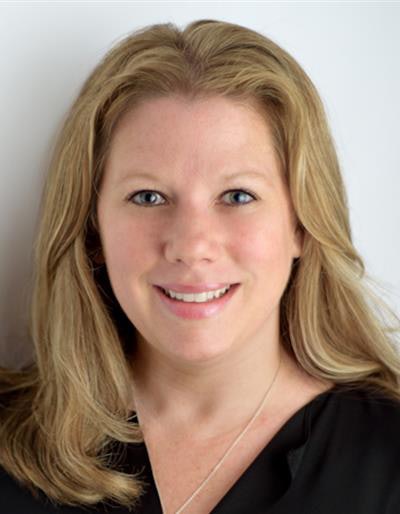
We now have more concrete details about the revisions to the Paycheck Protection Program (PPP) that were outlined in our recent article following the passage of the Paycheck Protection Program Flexibility Act (PPPFA). The PPP Loan Forgiveness Application (SBA Form 3508) has been revised and a new, simplified application (SBA Form 3508EZ) is also available, along with instructions, from the SBA website.
A choice of forgiveness application forms
The EZ form may be used if any one of the following conditions is true:
- The practice did not reduce salaries or wages of their employees by more than 25% and did not reduce their employees' hours.
- The practice did not reduce salaries or wages of their employees by more than 25% and was unable to operate at the same level of business activity due to compliance with requirements or guidance related to the COVID-19 public health emergency.
- The borrower is self-employed, that is, not an employee of a corporation or other type of entity and did not include employee salaries in the original loan application. This is a limited exception that would not apply to most medical group practices.
 Rebecca Farrington from Healthcare Administrative Partners.
Rebecca Farrington from Healthcare Administrative Partners.If the practice does not meet any of these criteria, then a full-length PPP Loan Forgiveness Application must be filed. The simplified form is only three pages in length, whereas the regular form consists of five pages plus very detailed schedules listing information for each employee in the practice. The short EZ form does not require any calculations related to the number of employees on payroll or the amount paid to those employees since the practice is certifying that a reduction of staff or payroll did not occur. The form asks only for the relevant payroll and nonpayroll costs over the covered period and verifies that the payroll portion is at least 60% of the potential loan forgiveness in order to arrive at the final forgiveness amount.
A choice of covered period
Regardless of which form is used, the practice must determine the period to be used as the covered period. The PPPFA offers the option to use either an eight- or 24-week period that begins on the date the loan proceeds were received; however, the eight-week option is only available if the loan proceeds were received before June 5, 2020. Alternatively, the practice may elect to use the eight- or 24-week covered period that begins with the first pay period following receipt of the loan proceeds rather than beginning on the date the loan was received; this is known as the alternative covered period. In any case, the covered period must end no later than December 31, 2020.
If the eight-week covered period option is available to the practice, it might be attractive if the practice has already spent its PPP funds and can now wrap up its forgiveness application filing in a timely manner, or if a practice can meet the staffing and pay rate criteria by the end of the covered period but might anticipate future staff reductions and therefore might later drop under the levels required for loan forgiveness.
For a practice that did reduce its staff and/or payroll amounts, the PPPFA extends until December 31, 2020, the time allowed for the staff and payroll to be restored to the levels that existed during the base reference period. The original PPP rules required that this take place by June 30, 2020.
New limits on payroll forgiveness
As we reported in our previous article, those practices that are using their PPP to fund payroll for individuals who earn $100,000 or more will find that they will be able to obtain forgiveness for a larger amount of such payroll. The original eight-week covered period allowed a maximum of only $15,385 to be forgiven (8/52 x $100,000), but with the 24-week covered period, the maximum will now be $46,154 per person. Note, however, that a practice with only 5 or fewer owners (in other words, each person owns 20% or more of the practice) is eligible for loan forgiveness of up to only $20,833 of payroll per person over the 24-week period.1 This change, coupled with the revised requirement that only 60% (rather than 75%) of the loan must be used for payroll costs, will make it easier for practices to maximize their loan forgiveness.
When to file and what happens next
The PPP Loan Forgiveness Application, either the Form 3508 or 3508EZ, can be filed with the lending bank once the practice has spent the PPP loan proceeds, even before the end of the covered period. That will likely not occur before June 30 in many cases since the earliest PPP funding began in late April and in theory it should take at least 2.5 months for the funds to be spent. Note that if a forgiveness application is filed before the end of the covered period, and the practice has reduced employees' salaries or wages in excess of 25%, the practice must account for the excess salary reduction for the full eight- or 24-week covered period. The safest course of action might be to wait until after December 31 to file the application for forgiveness.
The lending bank has up to 60 days to respond to the forgiveness application and indicate the amount of the loan that will be forgiven. If forgiveness does not come up to the full amount of the original loan, then the practice has between two to five years to repay it (depending on the date the loan was issued), with interest at 1% per annum. There is no penalty for repaying the full remaining, unforgiven balance immediately.
Conclusion
The new short form will significantly reduce the time required and the complexity of documentation for a practice to file its loan forgiveness application, provided the criteria to use it are met. The extended period in which to use the funds along with the revised payroll/nonpayroll thresholds will make it easier to reach full loan forgiveness.
While we strive to be as thorough and accurate as possible, nothing in this article should be construed as legal, accounting, or tax advice, and practices should consult with their accountants, attorneys or other advisors as necessary.
1. According to the PPP Borrower Application Form Revised June 2020, an owner is defined as a sole proprietor or a shareholder, partner or LLC member who owns 20% or more of the company.
Rebecca Farrington serves as the chief revenue officer for Healthcare Administrative Partners. She has more than 20 years of experience in healthcare sales and management roles, focusing on hospital-based and physician revenue cycle management.
The comments and observations expressed are those of the author and do not necessarily reflect the opinions of AuntMinnie.com.



















